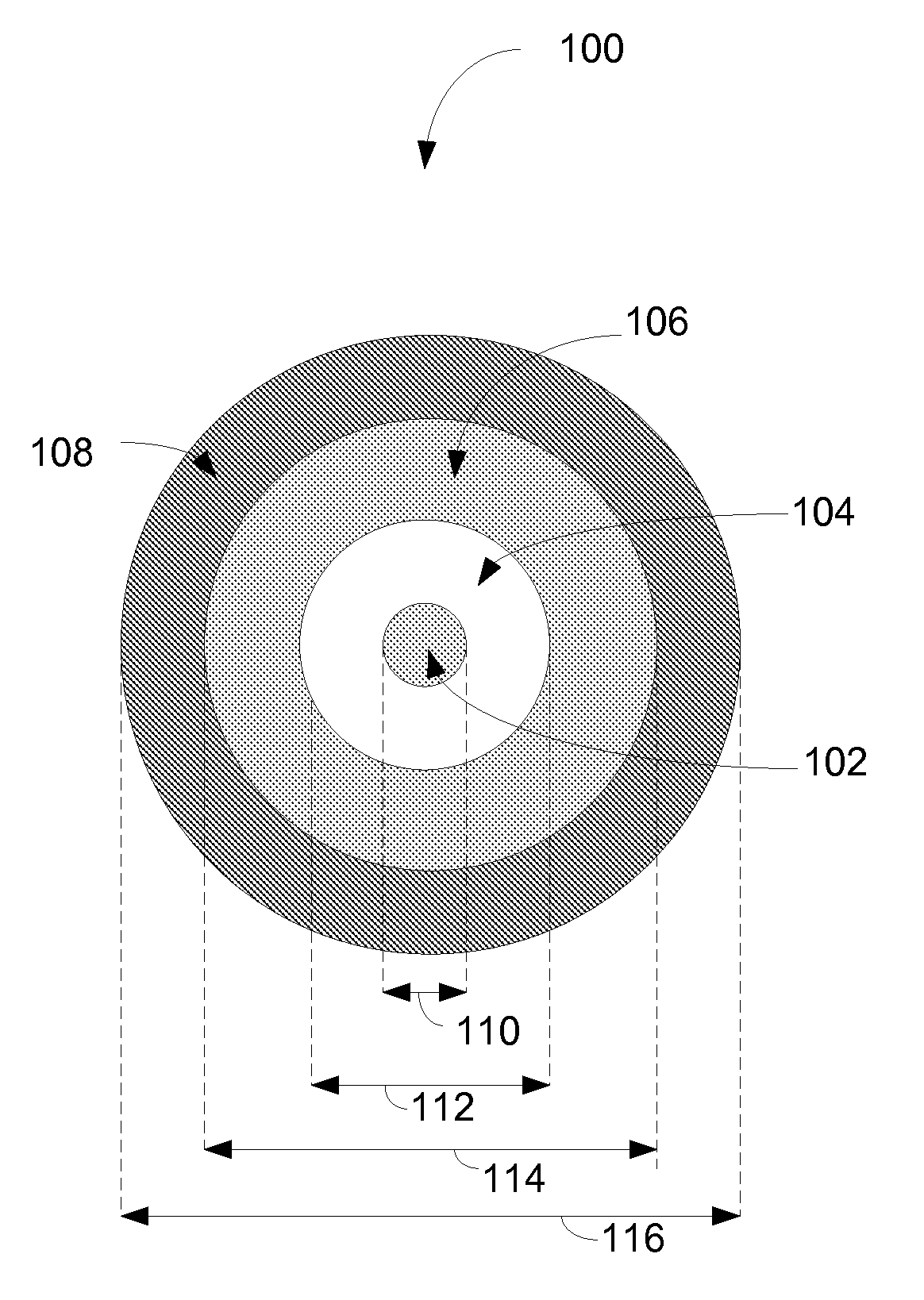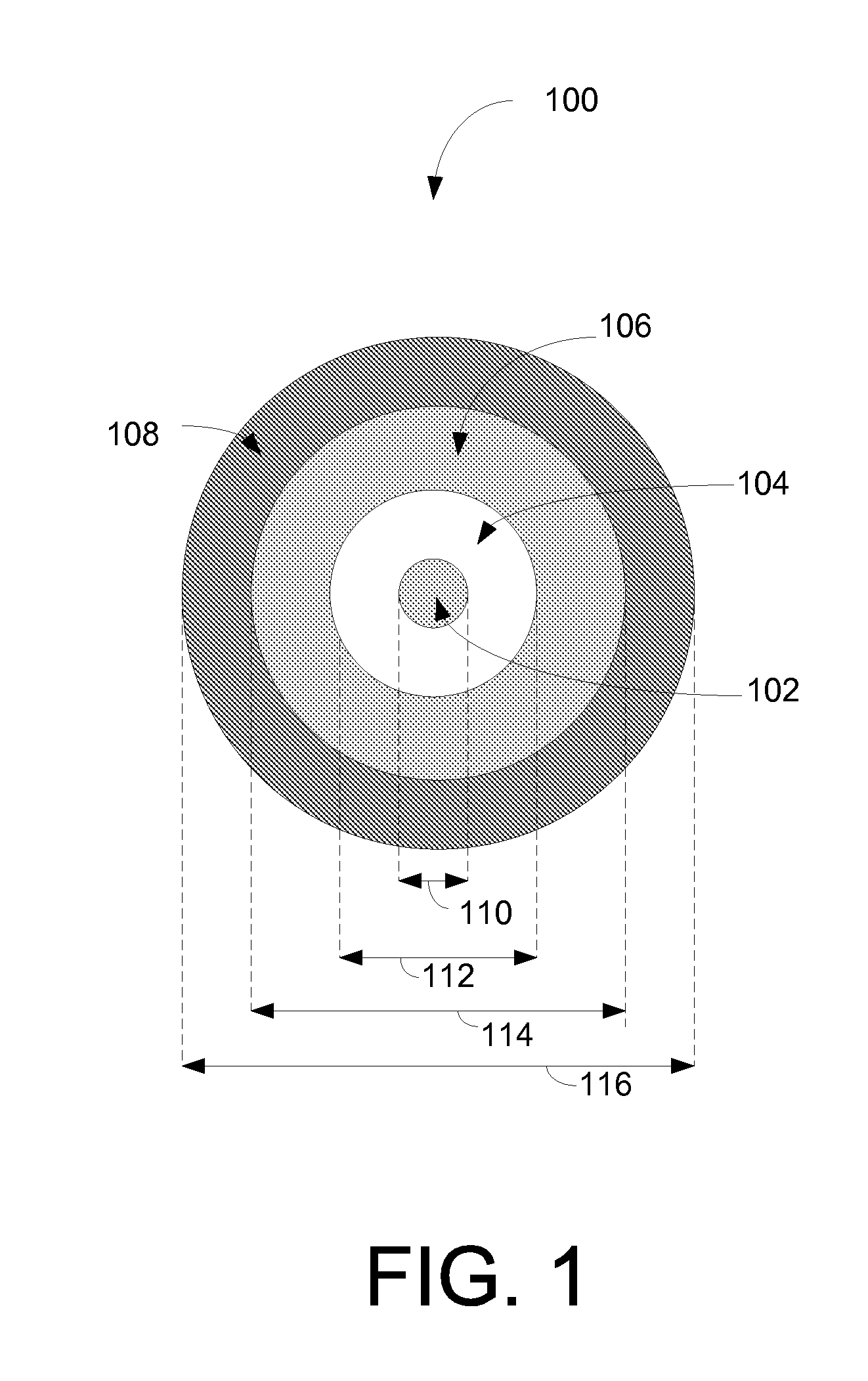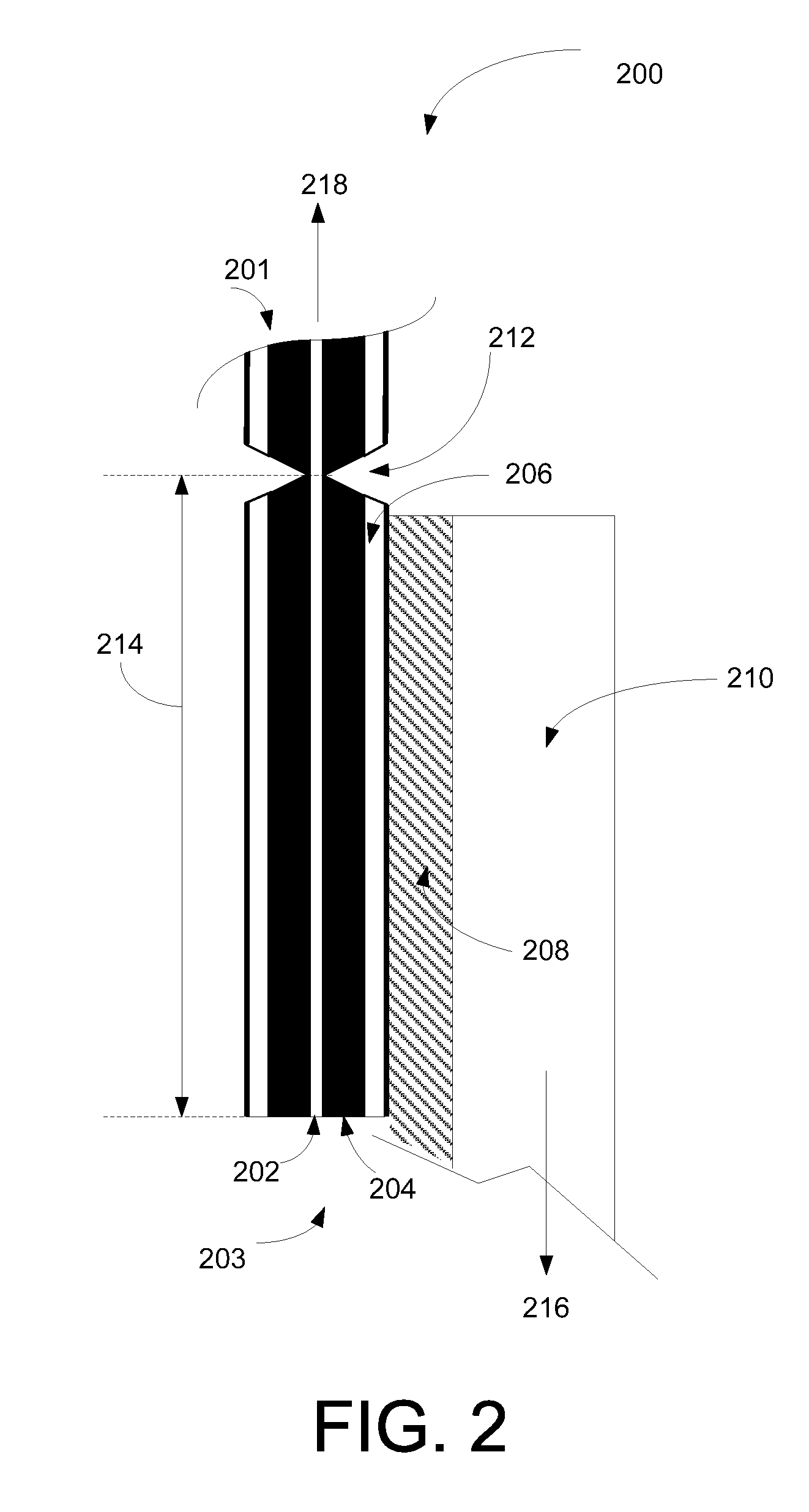Optical fiber coatings for reducing microbend losses
a technology of optical fiber and microbend, applied in the field of optical fiber coatings, can solve the problems of signal loss, bandwidth-limiting polarization mode dispersion in the telecommunication system, and microbends can also arise, and achieve the effect of reducing microbend losses
- Summary
- Abstract
- Description
- Claims
- Application Information
AI Technical Summary
Benefits of technology
Problems solved by technology
Method used
Image
Examples
Embodiment Construction
[0021]Embodiments of the invention will be described more fully hereinafter with reference to the accompanying drawings, in which embodiments of the invention are shown. This invention may, however, be embodied in many different forms and should not be construed as limited to the embodiments set forth herein; rather, these embodiments are provided so that this disclosure will be thorough and complete, and will fully convey the scope of the invention to those skilled in the art. Like numbers refer to like elements throughout. Certain embodiments of the invention may enable a reduction in optical fiber microbend losses while maintaining durability.
[0022]Conventional methods for reducing microbend losses have been predominantly focused on reducing the modulus of the primary coating. However, reducing the modulus of the primary coating can reduce the strip force, and can cause delamination and coating separation during standard tensile strength testing, and also during handling of the o...
PUM
| Property | Measurement | Unit |
|---|---|---|
| Pressure | aaaaa | aaaaa |
| Pressure | aaaaa | aaaaa |
| Pressure | aaaaa | aaaaa |
Abstract
Description
Claims
Application Information
 Login to View More
Login to View More - R&D
- Intellectual Property
- Life Sciences
- Materials
- Tech Scout
- Unparalleled Data Quality
- Higher Quality Content
- 60% Fewer Hallucinations
Browse by: Latest US Patents, China's latest patents, Technical Efficacy Thesaurus, Application Domain, Technology Topic, Popular Technical Reports.
© 2025 PatSnap. All rights reserved.Legal|Privacy policy|Modern Slavery Act Transparency Statement|Sitemap|About US| Contact US: help@patsnap.com



